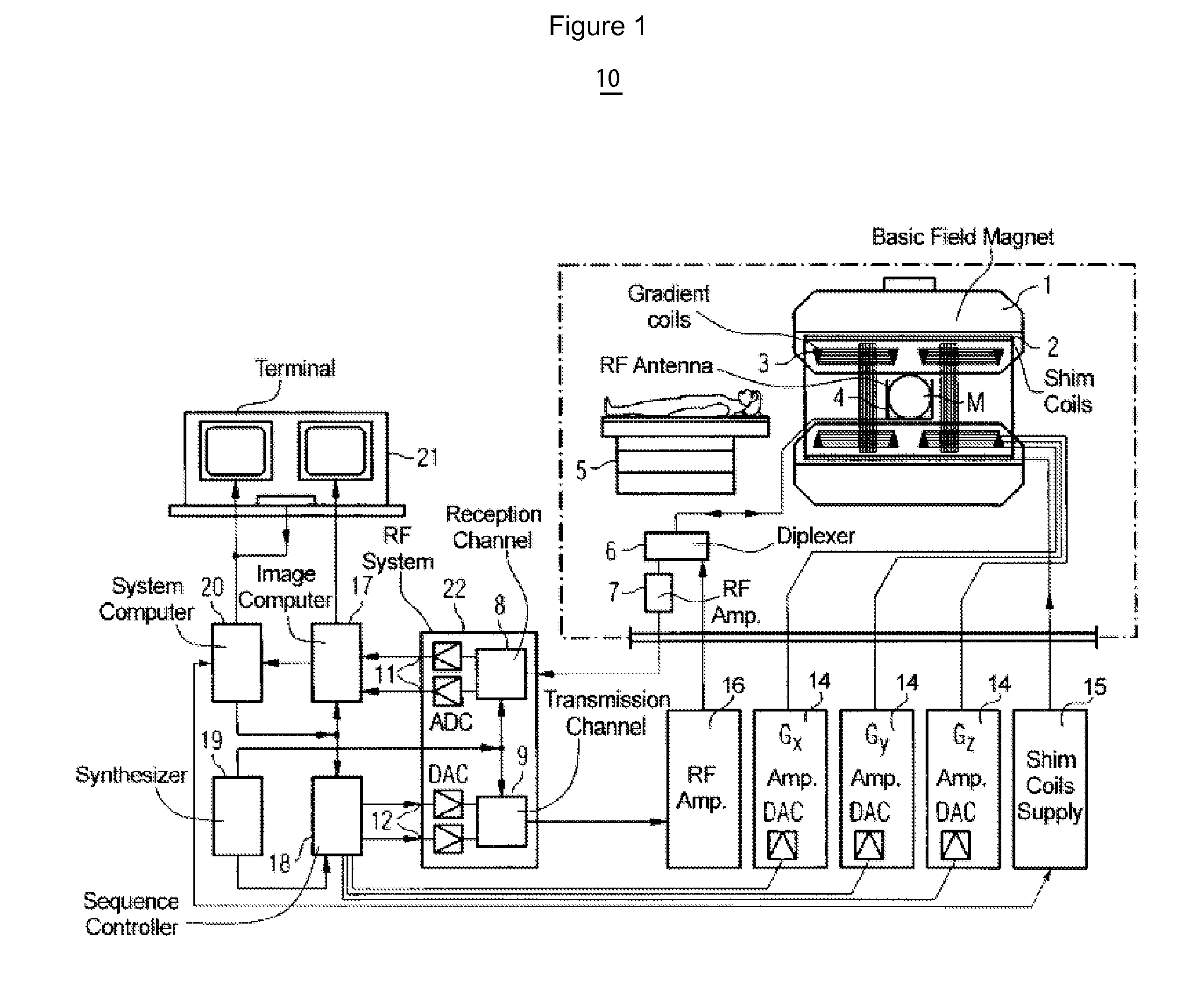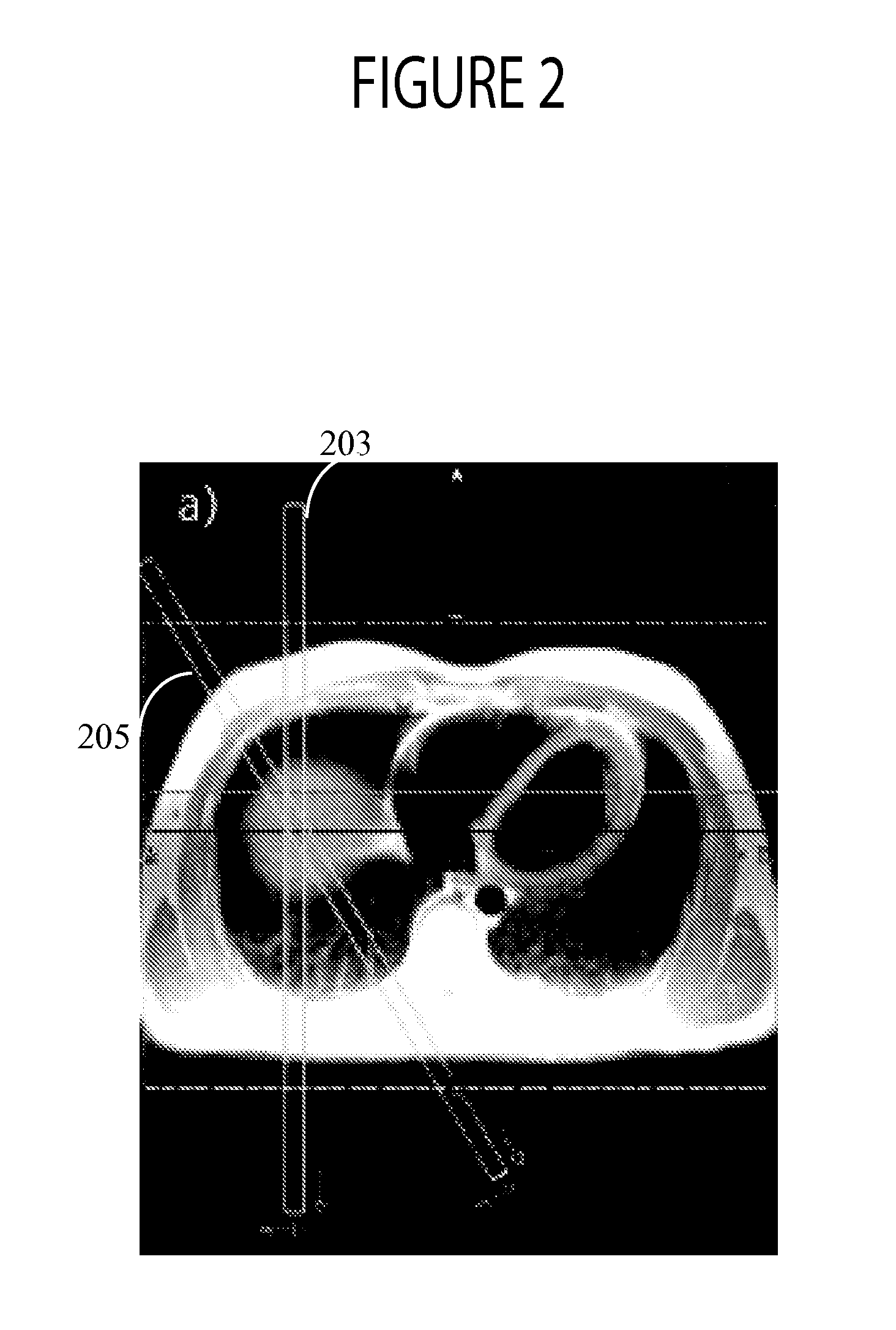System for Multi Nucleus Cardiac MR Imaging and Spectroscopy
a multi-nucleus, mr imaging technology, applied in the direction of nmr measurement, instruments, applications, etc., can solve the problems of reduced spectral resolution and contamination of the 1h mr spectrum, affecting the reliability of myocardial 1h mr spectroscopy, and relatively long total examination tim
- Summary
- Abstract
- Description
- Claims
- Application Information
AI Technical Summary
Problems solved by technology
Method used
Image
Examples
Embodiment Construction
[0013]Respiratory motion compensation using one dimensional / two dimensional (1D / 2D) PACE (Prospective Acquisition Correction) based on echoes from designated lines (1D) or areas (2D) termed navigators is known to be used for double-triggered cardiac proton spectroscopy. The double triggering comprises triggering on both a respiratory cycle PACE derived signal and on a cardiac e.g., ECG signal. The navigators measure the displacement of the liver-lung interface during free breathing. The displacement information allows for double triggering on a defined window within the respiratory cycle and on a defined trigger delay after an R-wave based on an ECG signal. Furthermore, the displacement information allows the excitation volume to be shifted by the determined respiratory displacement within the defined window in real-time (volume tracking). Therefore, application of respiratory navigator gating and tracking improves spectral resolution and reproducibility for metabolic imaging of myo...
PUM
 Login to View More
Login to View More Abstract
Description
Claims
Application Information
 Login to View More
Login to View More - R&D
- Intellectual Property
- Life Sciences
- Materials
- Tech Scout
- Unparalleled Data Quality
- Higher Quality Content
- 60% Fewer Hallucinations
Browse by: Latest US Patents, China's latest patents, Technical Efficacy Thesaurus, Application Domain, Technology Topic, Popular Technical Reports.
© 2025 PatSnap. All rights reserved.Legal|Privacy policy|Modern Slavery Act Transparency Statement|Sitemap|About US| Contact US: help@patsnap.com



